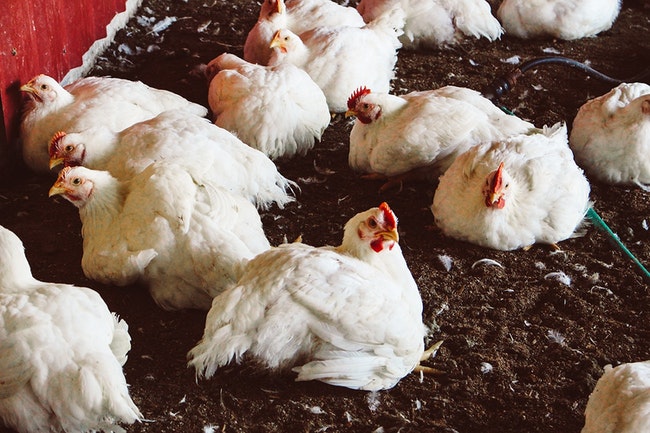
The number of eggs produced by Oregon chickens, like these at KooKoolan Farm in Yamhill County, was the lowest in nine years, causing prices to increase. (Oregon Department of Agriculture photo)
As people hunkered down at home last year, trying to avoid becoming a pandemic statistic, Oregon’s nursery industry pulled in great numbers.
The value of nursery plants grown in Oregon last year surpassed $1 billion for the second year in a row, and cherry and hazelnut growers also enjoyed a banner year.
But the value of wine grapes plummeted, according to the latest Oregon Department of Agriculture report. The annual analysis, which covers more than 225 commodities produced in the state, tallies the potential sales value of production.
Cool weather in late spring in some areas hampered the “fruit set,” when grapes ripen enough to be picked for wine. Fires also hammered the industry.
“Fall wildfires and thick ground level smoke right at harvest time in (September) 2020 blanketed nearly all of Oregon’s 21 viticultural areas,” Tom Danowski, executive director of the Oregon Wine Board.
Some of the grapes produced couldn’t be sold for wine because of the potential for “smoke taint.”
“A lot of wineries were rejecting fruit because of smoke concerns,” said Michael Moore, owner of Quail Run Vineyards in Talent. “Smoke can impart bad flavors in the wine.”
One winery out of more than 900, Simple Machine in Talent, burned to the ground, according to the Oregon Wine Board.
“The Alameda fire tore through and destroyed it in a matter of hours the week of September 7,” Sarah Murdoch, the board’s communications director, told the Capital Chronicle in an email.
But there were sweet endings. Donors gave the owner a ton of Pinot noir grapes, and offers of equipment, barrels and winery space poured in from other Rogue Valley wineries.
Moore also had a relatively good 2020. His vineyards weren’t affected by smoke despite fires in the region and the weather was “just beautiful” throughout much of the season, he said.
His yield was down but the quality was up.
“The set wasn’t as good as it could have been but the fruit that we did get was really exceptional,” Moore said. “Last year was a pretty perfect year.”
Overall, the industry saw a 6% decrease in harvest and a drop of nearly 30% in grape production, the wine board said.
The value of the grapes produced sunk by one-third in 2020 compared with the previous year, the agricultural report showed. Still, wine grapes were Oregon’s eighth crop in terms of value, at $157.9 million.
That compares with nursery and greenhouse production, the state’s number one agricultural sector, valued at $1.2 billion in 2020.
The agriculture department called it a “Covid-19 boon” for the industry, with more people taking up gardening.
Cattle and calves are the state’s second commodity in terms of value — $587.8 million for 2020 — followed by hay, valued at $569.1 million, a 16% drop from 2019.
New to the department’s top 10 listing are cherries and hazelnuts. There was a high demand for cherries across the country, with producers enjoying a nearly 80% increase in value at $133.8 million. Oregon is the nation’s third largest producer of cherries, accounting for nearly 20 percent of the nationwide market, the department said.
Hazelnuts were in high demand as well. Oregon produced nearly one-quarter more than in 2019 and enjoyed a nearly 60% increase in value — $132.3 million.
Hazelnut acreage has spread in the past decade, from 30,000 to 80,000 acres, including 10,000 acres that matured enough to be harvested last year, which increased the output.
The fervent sales of cherries and hazelnuts, both valued commodities for home bakers making pies, jams and sweets, contrasted with the sale of another kitchen staple: eggs. The number of eggs produced in 2020 — 684 million — was the lowest amount in nearly a decade. Prices also went up, costing $1.28 on average for a dozen, compared with less than $1 in 2019. The price increase raised the overall value for producers by nearly 30%, the department said.
READ: The Department of Agriculture’s statistics.
Oregon Capital Chronicle is part of States Newsroom, a network of news bureaus supported by grants and a coalition of donors as a 501c(3) public charity. Oregon Capital Chronicle maintains editorial independence. Contact Editor Les Zaitz for questions: [email protected]. Follow Oregon Capital Chronicle on Facebook and Twitter.
NEWS TIP? STORY IDEA? Please send an email to the Salem Reporter team at [email protected].









